New Mexico was once home to hundreds of mills, grinding grain grown throughout the state. Now that number is down to a handful. But that’s changing, thanks both to farmers who are growing heritage grains and to places like Los Poblanos that are putting everything from Sonora wheat to blue corn in their bread, tortillas, salads–and even in desserts. Regional Editor Julia Platt Leonard stops by Campo, Los Poblanos’ restaurant–to taste for herself.
Ceviche
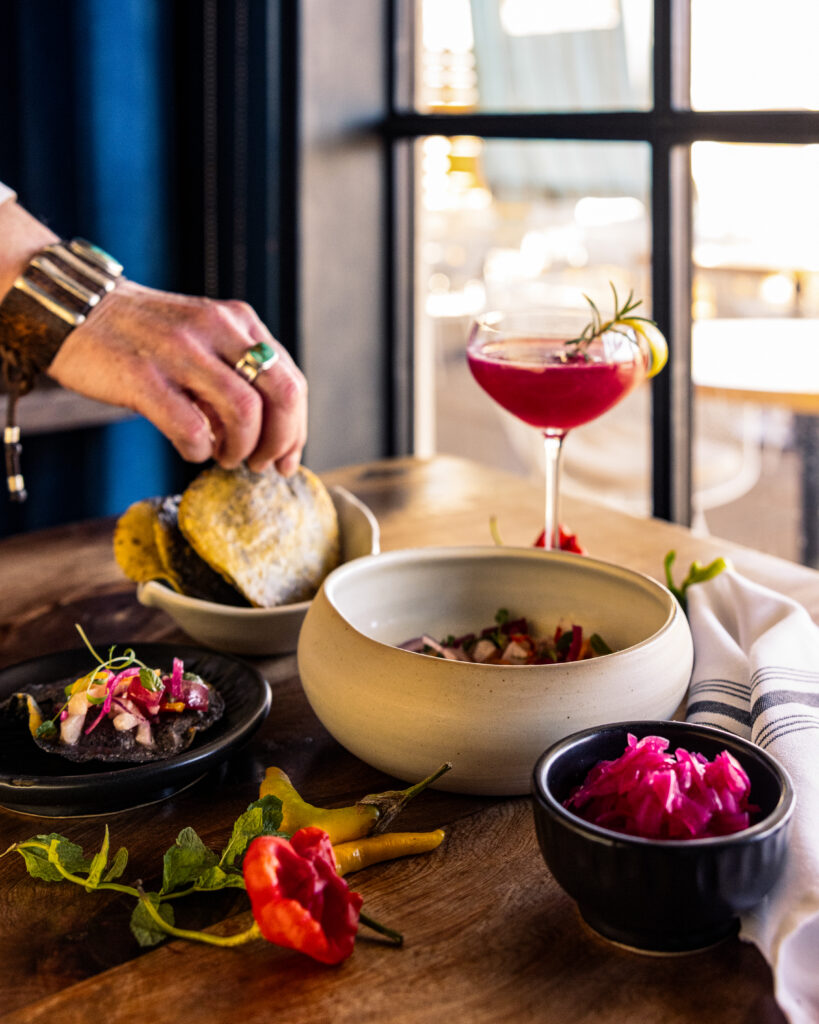
Take the freshest fish–here it’s halibut–add a quick blast of citrus, then finish with an artful garnish of herbs and chile. Campo’s ceviche is a dish where there is no place to hide and is sublime under the assured hand of Head Chef Chris Bethoney. The two-toned tostada, perfect for added crunch and dipping, is crafted from masa they make daily. “They’re not always those two colors,” he says of the tostadas. “Sometimes they’re only one color, sometimes they’re three. It depends on what corn we nixtamalize the night before.” Try his Ceviche recipe on our website!
House-Chorizo Memela
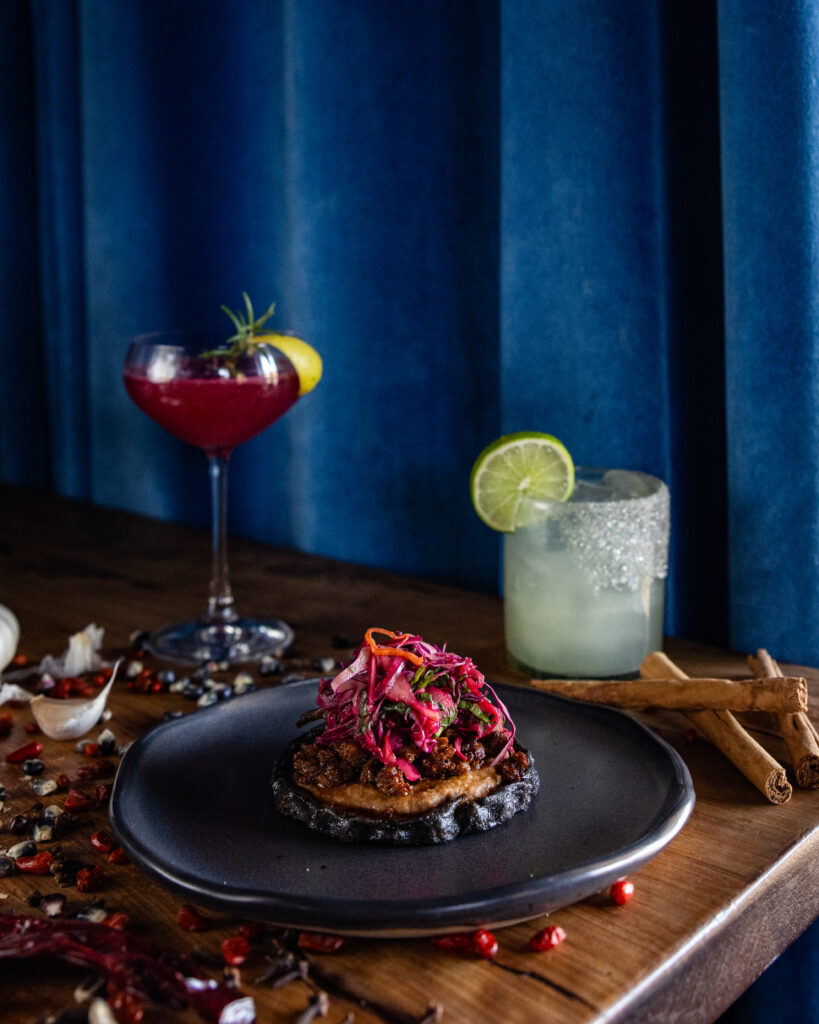
Fried masa, beans, cabbage and herbs. On paper, it sounds like the simplest of dishes but at Campo, it’s sheer sophistication. The beans come from local growers and are paired with a vibrant pink-pickled cabbage (“I could eat that cabbage on tons of other dishes,” says Bethoney), and chorizo made in-house. “The chorizo that our butcher Matt makes, I’d say, is the best Mexican-style chorizo I’ve had,” Bethoney says. One bite, and we couldn’t agree more.
Lemon Za’atar Salad
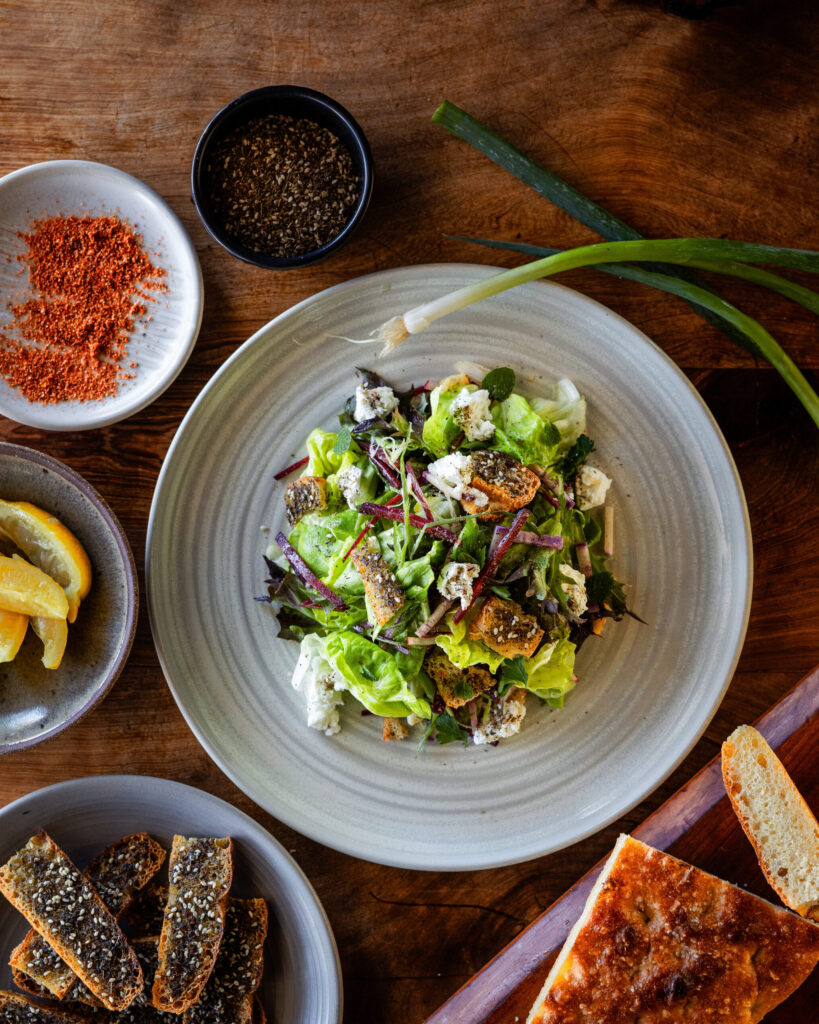
This is an ode to two salads that Bethoney grew up eating: fattoush (a Middle Eastern salad chock-full of toasted pita and fresh veggies) and what was called simply “Lebanese salad” (his father is Lebanese). What gives this salad punch is the za’atar spice blend they make in the Campo kitchen. It takes Bethoney back. “That’s what we would eat when we were little kids, licking the spices off the bread.” Make Campo’s Lemon Za’atar Salad recipe at home.
Local Pork Mole Rojo
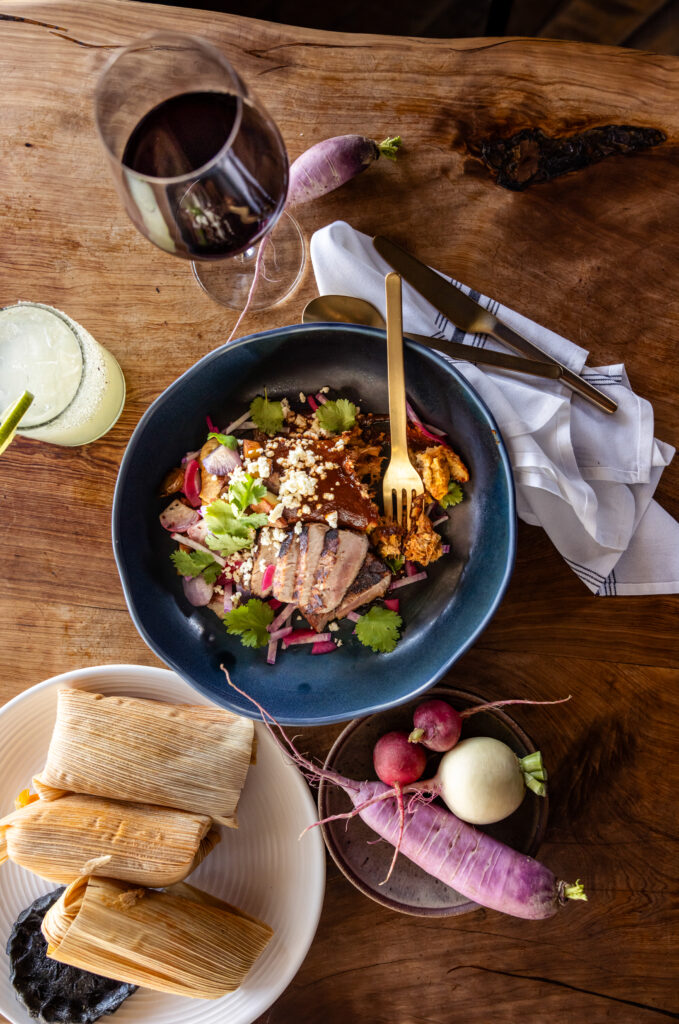
Campo gets its pork from local farmers and uses the whole pig, so there’s no waste. That means making their own ham for breakfast and brunch, house-made sausage, Red Chile Manteca–a tasty mix of pork fat and butter–that’s served with their Bread Board, and a range of house-made charcuterie (think mortadella, and summer sausage). And a dish like their Pork Mole Rojo. There is pork meat and lard in the hearty tamale, and more delicate pork loin with floral notes, thanks to a genius hibiscus brine. Using the whole pig isn’t always straightforward but Bethoney considers it a creative challenge. “It’s something we want to do. I wouldn’t say it’s a burden. It’s definitely why we’re doing all the things we’re doing.”
Butter Pecan Semifreddo
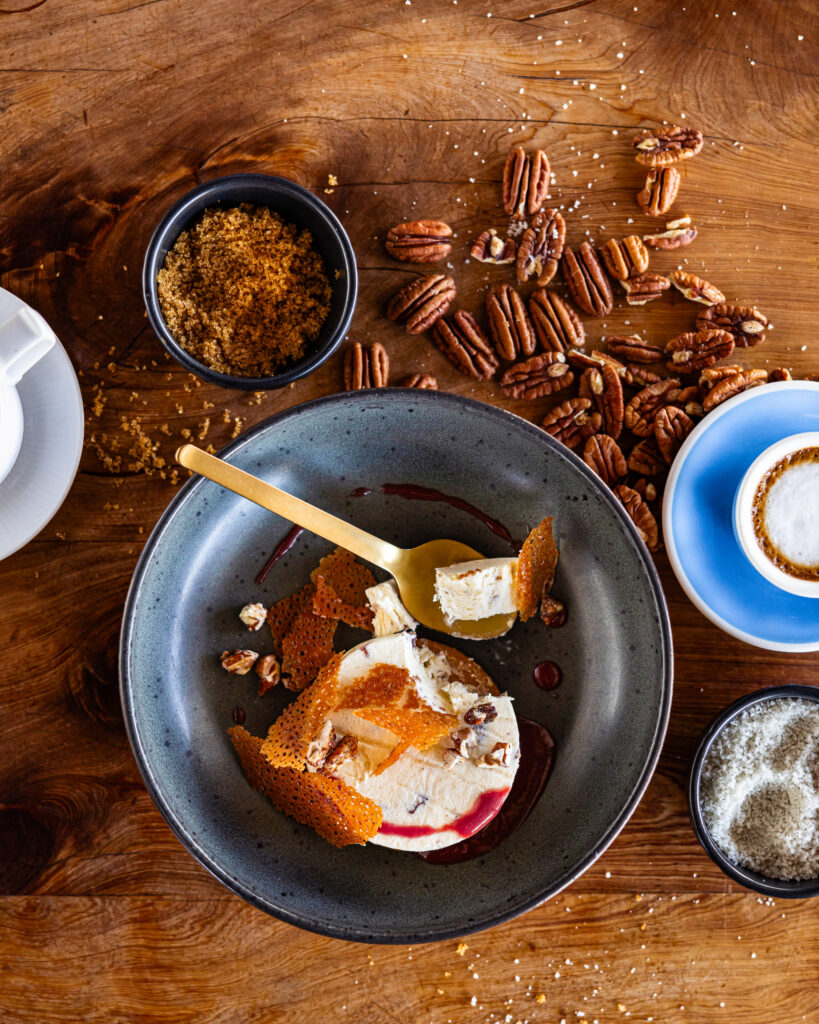
Semifreddo, the beloved Italian dessert, comes to the Southwest with this inspired dish from Pastry Sous Chef Violet Jones. She uses local pecans, maple syrup, and even grapes from the Los Poblanos farm. (The grapes are puréed, made into a sauce, and then magically it seems, turned into a crisp tuille.) It has lush, creamy softness from the semifreddo, crunch from the pecans, sweetness from the syrup, and a salty-buttery bite from the sablé cookie (made from the Sonora White flour they source). Basically, it’s what a peanut butter and jelly sandwich wants to be when it grows up. Dig into this Butter Pecan Semifreddo recipe by making it at home.
Blue Corn Gelato
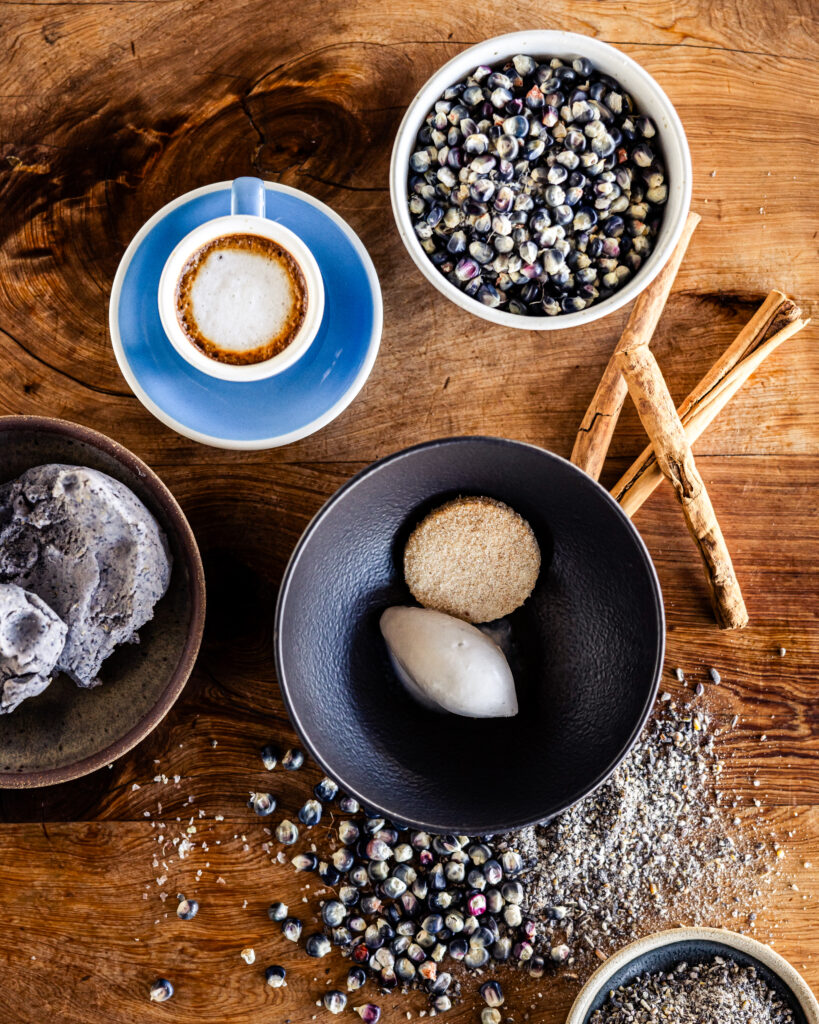
Corn is everywhere on the Campo menu, but in desserts too? The short answer is yes and to stunning results. Here, they steep the masa with cream, milk, and sugar. No eggs–the thickening comes from the masa. The mixture is blended and then run through an ice cream machine, scooped, and served with a bizcochito (“That’s my sous chef Crystal’s grandma’s recipe so it’s really near and dear,” Jones says.). Dessert is often overlooked she says, but it shouldn’t be. “If you have a tamale for your entrée and then you go into blue corn gelato, it’s such a special way to round out your meal.” Follow along with Violet Jones’ recipe to make your own Blue Corn Gelato.
You can find a range of heritage grains not only on the menu at Campo, but also for sale at the Los Poblanos Farm Shops and online.
Recipes by Campo Head Chef, Chris Bethoney and Pastry Sous Chef, Violet Jones / Story by Julia Platt Leonard / Photography by Tira Howard
Subscribe to TABLE Magazine‘s print edition.

